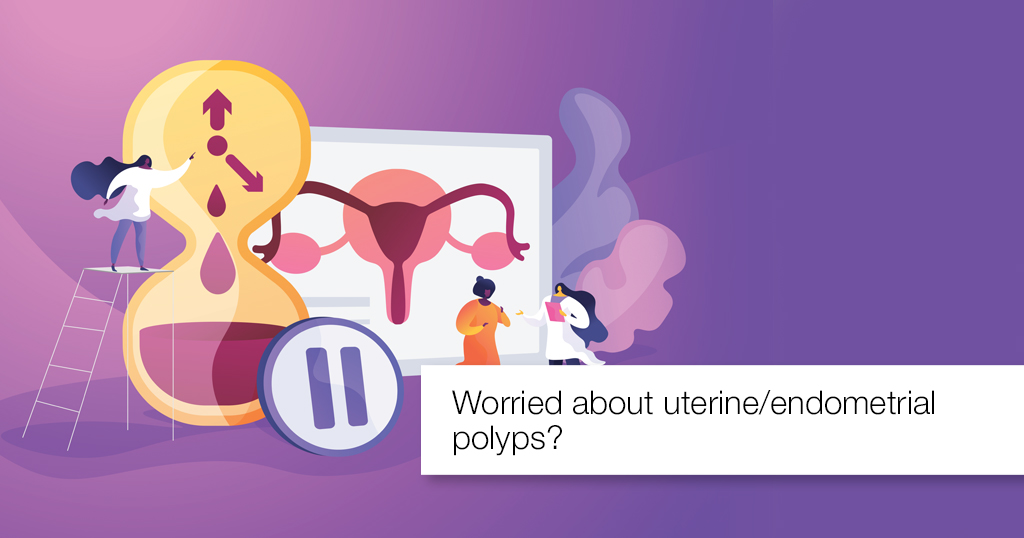 Verified By Dr Vimee Bindra Basu January 13, 2023
Verified By Dr Vimee Bindra Basu January 13, 2023

Menopause can be sometimes difficult and challenging. Menopause is not a disease. But, it does have some symptoms which can be both mentally and physically challenging. Menopause is defined as the complete cessation of periods for a period of at least one year. Any bleeding post-menopause is considered abnormal and needs evaluation. Most common cause of such bleeding in the perimenopausal and menopausal age group is endometrial or intra-uterine polyps. Let’s understand Uterine polyps and the way they can be dealt with.
Uterine polyps are small growths that form in the inner wall of the uterus and then slowly grow to even fill the uterine cavity. It can be single or multiple. The endometrium or the inner lining of uterine cells causes this. Opposed to what you think; these polyps are not cancerous but there are chances that a few polyps could turn cancerous.
If that happens, they are called precancerous polyps. Some can be a few millimeters while some can be the size of a golf ball. You can have only one uterine polyp or many and they generally stay contained in your uterus. They are attached to the uterine wall by a very large base or sometimes a thin stalk.
Uterine polyps can sometimes can slide through the opening of the uterus into the vagina.
When you have irregular bleeding or any bleeding post-menopause is not normal and you need to seek doctors’ advice. Any pre or post-menstrual spotting is also an indication you should visit your doctor. If there is any irregular menstrual bleeding, you need to consult the doctor.
These uterine polyps are a result of the estrogen-sensitive response.
Every month, the estrogen levels rise and fall in the woman’s body and this may be related to the lining of the uterus. This estrogen can cause it to thicken and then shed the wall when the period occurs. But when there is an overgrowth of the uterine lining, then the polyp occurs.
Another cause of polyps to occur is the age factor. They are quite common when you are nearing menopause age or if you have already completed menopause. This may be again due to the various changes in hormonal levels, that the polyps develop during this phase.
Certain risk factors contribute to polyps and they are:
Transvaginal ultrasound, hysterosonography, and hysteroscopy are the three ways of diagnosing this condition.
During the microscopic examination, if they find any cancerous cells, they will talk to you about the next possible steps you need to take. Once removed, polyps usually do not need any further treatment but if they recur, they need to be treated again.
You cannot prevent uterine polyps. However, you can have regular gynecological checks to identify this condition. Make sure you are not having any risk factors that increase the chance of developing polyps.
Nobody actually knows the exact cause of the uterine or endometrial polyps as it has also been found in those women who haven’t had any symptoms. It is best to get regular screening and take advice from your Gynecologist on the best course of action if you have polyps in the uterus.
Consultant Gynaecologist and Obstetrician and Laparoscopic Surgeon and Infertility specialist at Apollo Hospital jubilee hills, Hyderabad AND Apollo Cradle, Hyderabad
